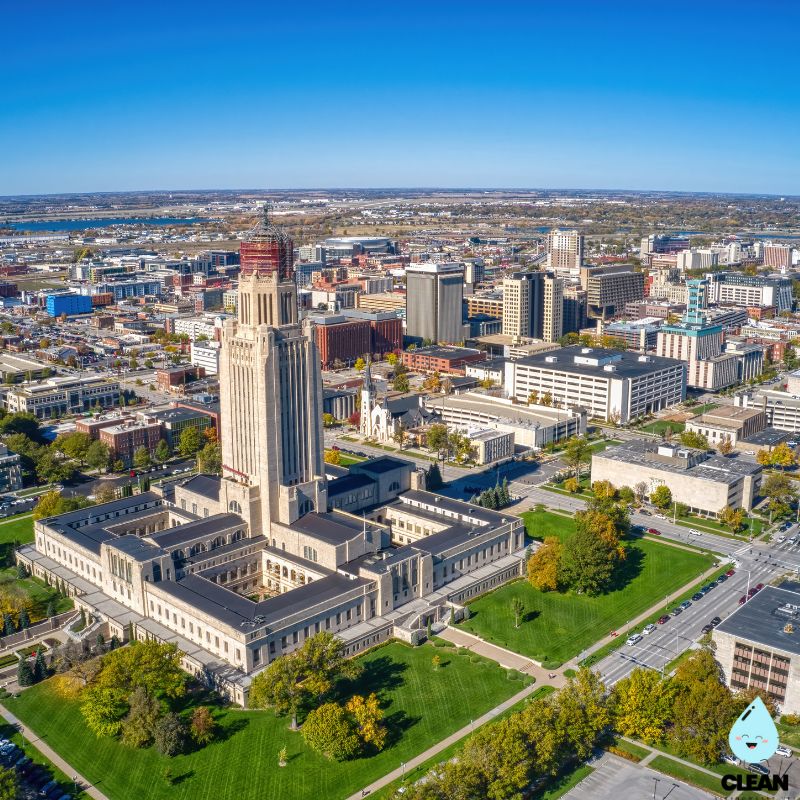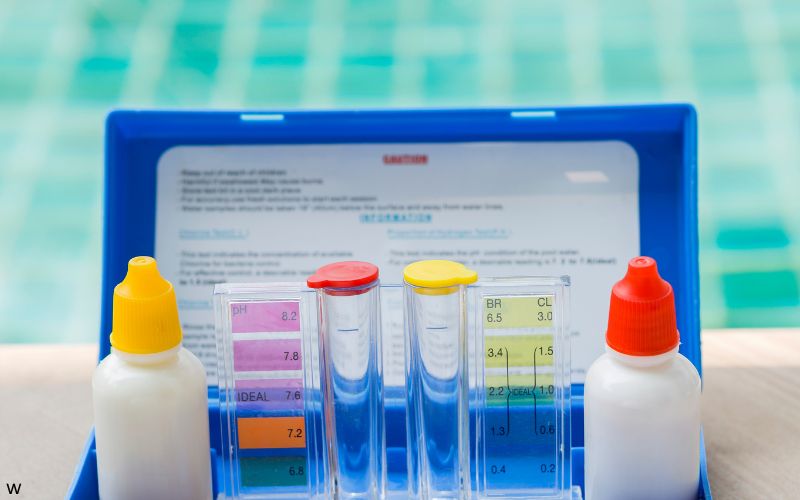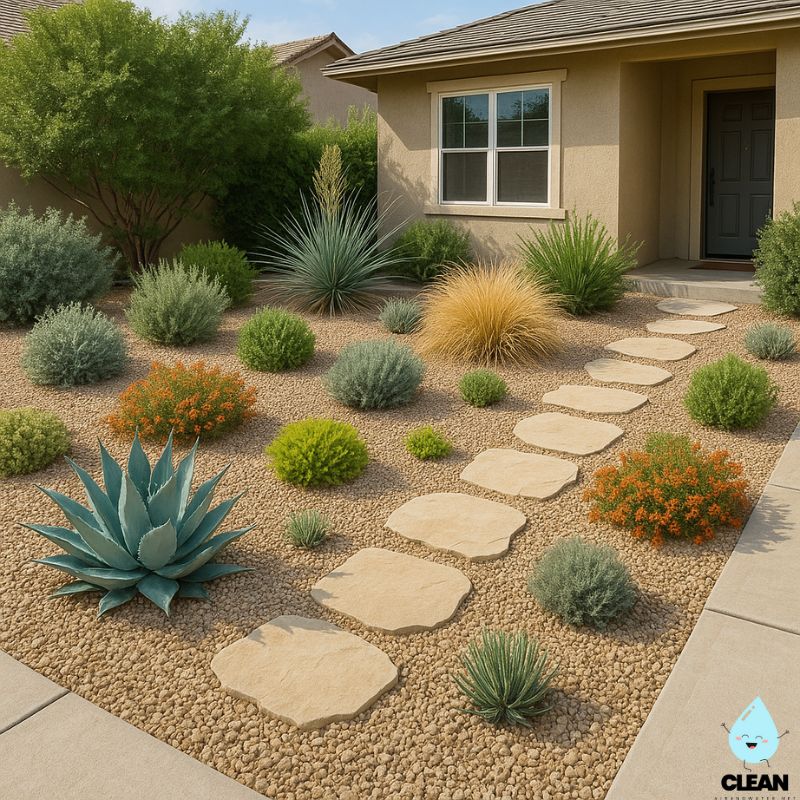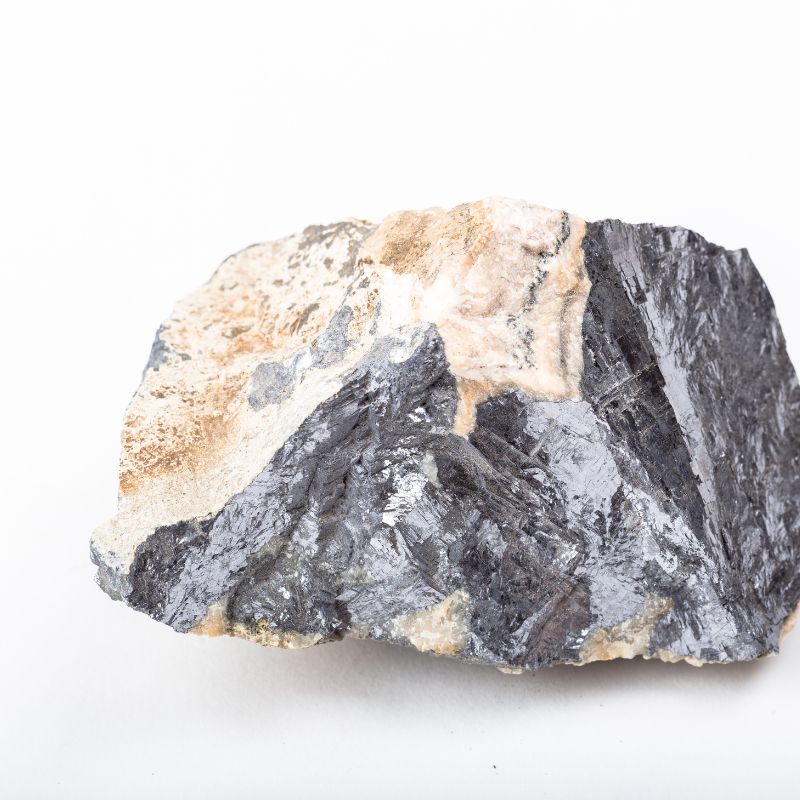Lincoln Water Quality at a Glance
some concerns
Is Lincoln Water Safe to Drink?
Generally Yes, With Some Caution – Lincoln’s water meets all federal standards and comes from high-quality groundwater sources. However, disinfection byproducts (TTHMs at 32 ppb and HAA5 at 21.8 ppb) present moderate cancer risk. The city also reports arsenic levels at 7.1-7.2 ppb (approaching the 10 ppb federal limit) and some homes built before 1950 may have lead service lines requiring replacement through the city’s program.
⚠️ Key Concerns for Lincoln Residents
- Disinfection Byproducts: TTHMs averaging 32 ppb and HAA5 at 21.8 ppb from chloramine treatment increase cancer risk
- Arsenic Levels: 7.1-7.2 ppb detected – approaching federal limit of 10 ppb; naturally occurring from geological sources
- Lead Service Lines: Homes built before 1950 may have lead service lines; city offers free replacement program
- Individual Contaminants: Testing found bromate, bromodichloromethane, and dibromoacetic acid exceeding health guidelines
Read the full report below for detailed analysis, city-specific data, and actionable recommendations for Lincoln residents.
Lincoln – Nebraska – Water Quality Report 2025: PFAS Testing, Infrastructure Concerns & Safety across your city
Lincoln Water System (LWS) has been providing safe, reliable water services to approximately 296,000 residents across Nebraska’s capital city and surrounding areas since 1883. As part of the City’s Transportation and Utilities Department, the system encompasses over 1,370 miles of water distribution lines, several pumping stations, and advanced treatment facilities that deliver an average of 38.6 million gallons of drinking water daily to Lincoln residents and businesses.
Lincoln sources its drinking water primarily from wells along the Platte River near Ashland, Nebraska, approximately 20 miles northeast of the city. Approximately half of the supply is groundwater, while the other half is groundwater under the direct influence of surface water. The water is pumped to one of two nearby treatment facilities where it undergoes comprehensive processing to ensure safety and quality. Lincoln’s water consistently meets all federal and state quality standards, though the system faces ongoing challenges with disinfection byproducts, arsenic levels approaching federal limits, and lead service lines in older homes. The utility has implemented significant investments in water treatment technology, conservation initiatives, and watershed protection to ensure sustainable water supply for future generations, including a major project to create a second water source from the Missouri River by 2048.

Lincoln Water Quality: Current Status (2024-2025)
Latest Testing Results
- Comprehensive Monitoring: The Lincoln Water System conducts thousands of water quality tests annually, ensuring compliance with all EPA and Nebraska Department of Environment and Energy regulations for safe drinking water, with no violations recorded in 2024.
- Testing Scope: Lincoln’s water undergoes rigorous testing for over 100 regulated and unregulated contaminants, including PFAS under EPA’s UCMR 5 program, with monitoring conducted at treatment facilities and throughout the distribution network.
- Compliance Status: Lincoln’s water consistently meets all federal and state drinking water standards, though independent testing reveals some contaminants exceeding health guidelines for bromate, bromodichloromethane, and dibromoacetic acid.
Water Sources
- Platte River Wellfields: Primary source located near Ashland, approximately 20 miles northeast of Lincoln, drawing from the Platte River watershed with over 14 billion gallons pumped in 2024.
- Groundwater Composition: Approximately half of Lincoln’s water supply is pure groundwater, with the other half classified as groundwater under the direct influence of surface water, naturally high in quality but containing iron and manganese.
- Future Expansion: Plans are underway for a second water source through the “Water 2.0” initiative, which will develop a wellfield along the Missouri River with direct transport of treated water to Lincoln to serve needs through 2075 and beyond.
Advanced Treatment Technology
- Dual Treatment Processes: Lincoln operates two treatment processes – the traditional aeration, chlorination, detention and filtration method from the 1930s, and a newer ozone technology process that uses ozone as a strong oxidizer and disinfectant.
- Disinfection Protocol: The water system uses chloramine as the primary disinfectant (formed by combining chlorine and ammonia), which provides longer-lasting protection throughout the distribution system but can cause taste issues that don’t dissipate like chlorine.
- Quality Assurance: Advanced monitoring technologies throughout the treatment and distribution system provide real-time data on water quality parameters, with fluoride added to help prevent tooth decay at 0.8-1.5 ppm levels.
Infrastructure Modernization
- System Capacity: Current water infrastructure includes 1,370 miles of water mains, 12,823 fire hydrants, and 29,344 valves, with 159 broken mains repaired in 2024, and is projected to adequately serve Lincoln for the next 20-25 years.
- Lead Service Line Program: Lincoln has launched a Lead Service Line Replacement Program in July 2024, with over 130 lead service lines already replaced with modern copper lines, targeting completion by 2035.
- “Water 2.0” Project: Lincoln’s landmark future water source project represents the largest public works initiative in the city’s history, designed to secure water needs until at least 2075 through Missouri River wellfield development.
Customer Protection Initiatives
Lincoln Water System provides extensive customer support through various programs, including water conservation resources and the Lead Safe Lincoln program offering free lead service line replacements. The utility’s commitment to water quality includes transparent communication through annual water quality reports and free lead testing (one test kit per year per address). Lincoln’s comprehensive Water Management Plan includes designated day outdoor watering schedules and defines procedures for voluntary and mandatory water restrictions when necessary. The utility’s investments in advanced treatment technologies, lead service line replacement, and future water source planning demonstrate its dedication to providing safe, reliable drinking water for generations to come.
Recommendations for Lincoln Residents

Test Your Water
If you have concerns about your water quality, especially in older homes built before 1950 or with pre-1986 plumbing, consider getting your water tested. Lincoln Water System offers one free lead test kit per year per address – contact them at 402-441-7571, option 2, or visit lincoln.ne.gov/DrinkingWater for more information.

Conserve Water
Follow Lincoln’s Water Management Plan guidelines for outdoor irrigation. Consider installing water-efficient fixtures and appliances in your home. Even small changes like fixing leaks promptly can save thousands of gallons annually and reduce your water bill.

Consider Home Filtration
While Lincoln’s water meets all standards, homes with older plumbing may benefit from NSF-certified filters for drinking and cooking water. Look for filters certified to reduce contaminants of concern for your specific situation.

Follow Irrigation Guidelines
Adhere to Lincoln’s Permanent Conservation Measures, which include irrigation schedules based on your address (odd-numbered addresses on Tuesday, Thursday, Saturday; even-numbered addresses on Wednesday, Friday, Sunday). Avoid outdoor watering between 10 a.m. and 6 p.m. to minimize evaporation.

Report Issues
Contact Lincoln Water System Customer Service at 402-441-7551 for water main breaks, pressure problems, or quality concerns. Prompt reporting of leaks helps conserve water and maintain system integrity. For after-hours emergencies, call the same number for 24/7 assistance.
Frequently Asked Questions
Is Lincoln’s tap water safe to drink?
Yes, Lincoln’s tap water meets all federal and state drinking water standards. The city’s water comes from wells along the Platte River near Ashland, approximately 20 miles northeast of Lincoln, and undergoes comprehensive treatment to ensure safety.
Lincoln Water System conducts thousands of tests annually to monitor water quality. Treatment processes at the water treatment facilities incorporate multiple barriers against contaminants, ensuring safe drinking water. The utility’s commitment to water quality is demonstrated by its continuous monitoring and transparent reporting through annual water quality reports available to all customers.
Why does my water sometimes taste or smell different?
Occasional taste and odor changes can occur due to several factors:
1. Disinfection processes: Lincoln uses chloramine (a combination of chlorine and ammonia) as a disinfectant, which may occasionally be detectable by taste or smell, particularly in hot water
2. Seasonal water quality changes: Natural variations in source water can affect taste, especially during heavy rainfall or drought periods
3. Home plumbing: Internal plumbing issues or infrequently used faucets can sometimes cause taste or odor concerns
If taste or odor issues persist, contact Lincoln Water System at 402-441-7551 for assistance. Often, running cold water for a few minutes after periods of non-use can help improve water quality from your tap.
Is there lead in Lincoln’s water system?
Lincoln Water System complies with all federal and state regulations for lead and copper in drinking water:
• Lead service lines: Homes built before 1950 may have lead service lines, with the majority found in properties constructed before 1930. Lincoln launched a Lead Service Line Replacement Program in July 2024, replacing over 130 lines with modern copper pipes.
• Water testing: In 2022 testing, lead levels ranged from non-detectable to 18.4 ppb, with 90% of homes testing below 1.80 ppb, well under the EPA action level of 15 ppb
• Free testing: Lincoln offers one free lead test kit per year per address – call 402-441-7571, option 2
• Replacement program: The city aims to replace all lead and lead-contaminated galvanized service lines by 2035 at no cost to property owners
Homes built before 1988 are more likely to have lead components in internal plumbing, which is why testing is particularly recommended for concerned residents in older properties.
Are there water restrictions in Lincoln?
Lincoln currently operates under Permanent Conservation Measures, which are year-round water use guidelines:
Permanent Conservation Measures:
• Irrigation limited to three days per week (odd-numbered addresses on Tuesday, Thursday, Saturday; even-numbered addresses on Wednesday, Friday, Sunday)
• No outdoor watering between 10 a.m. and 6 p.m. to minimize evaporation
• No water waste (runoff onto streets, sidewalks)
Drought Response:
During severe drought conditions, Lincoln Water System may implement additional restrictions including:
• Further limits on outdoor watering
• Restrictions on vehicle washing, pressure washing, and filling of swimming pools
Current status and restrictions are available at lincoln.ne.gov/water or by calling 402-441-7551.
Quality News About Your Water
Get the comprehensive water quality news coverage you need with our dedicated US Water News Service. From coast to coast, we deliver in-depth reporting and expert analysis on PFAS contamination, EPA regulatory changes, infrastructure developments, and emerging water safety issues affecting communities nationwide. While mainstream media only covers the biggest stories, we provide the detailed, ongoing coverage that helps you understand the full scope of America’s water challenges. Whether you’re a concerned citizen, water professional, or community leader, our daily updates and analytical insights keep you informed about the issues that matter most to public health and environmental safety.
Contaminants of Concern

Disinfection Byproducts
Source: Formed when disinfectants like chloramine react with naturally occurring organic matter in water; may be more prevalent during warmer months
Health Effects: Long-term exposure to elevated levels may increase risk of certain health issues and potentially affect liver, kidney, and central nervous system
Current Levels: TTHMs averaging 32 ppb (highest locational running annual average), HAA5 at 21.8 ppb; both below EPA limits but at levels that independent testing suggests exceed health guidelines EPA Limits: 80 ppb for total trihalomethanes (TTHMs) and 60 ppb for haloacetic acids (HAA5)

Arsenic
Source: Naturally occurring in soil and bedrock in parts of Nebraska; can enter groundwater through natural erosion
Health Effects: Long-term exposure to elevated levels can potentially increase risk of cancer and affect cardiovascular, pulmonary, immunological, neurological, and endocrine systems
Current Status: Lincoln’s 2024 testing shows arsenic levels between 7.1-7.2 ppb, approaching the EPA maximum contaminant level; Lincoln Water System continues to evaluate options for future treatment and removal EPA Limit: 10 parts per billion (ppb) for arsenic in drinking water
Please read – our information
The information presented on cleanairandwater.net is compiled from official water quality reports, trusted news sources, government websites, and public health resources. While we strive for accuracy and thoroughness in our presentations, we are not scientists, engineers, or qualified water quality professionals.
Our mission is to present water quality information in an accessible, real-world format that helps people understand what’s in their water and make informed decisions about their health and safety. We believe that complex environmental information should be available to everyone in a format that’s easy to understand.
We make every effort to ensure our content is current and accurate, but we cannot guarantee that all information is complete or error-free. This website should not replace official communications from your local water utility or health department. We always recommend consulting official sources for the most up-to-date information regarding your specific water system.
Clean Air and Water is not liable for any unintentional errors, omissions, or outdated information. The content on this site is provided for informational purposes only and should not be considered professional advice.


